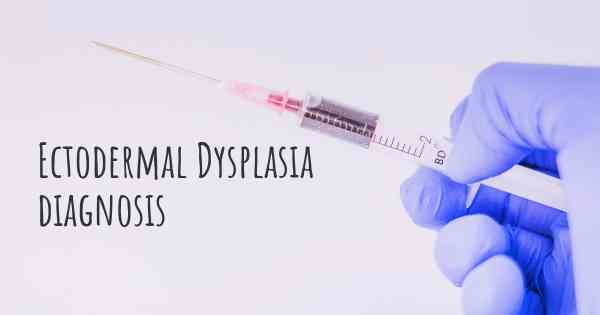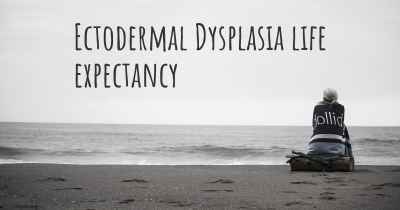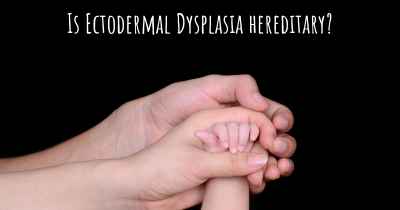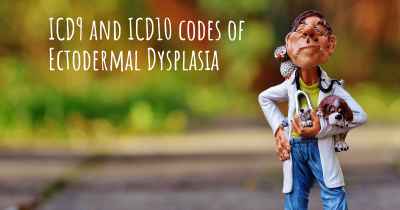How is Ectodermal Dysplasia diagnosed?
See how Ectodermal Dysplasia is diagnosed. Which specialists are essential to meet, what tests are needed and other useful information for the diagnosis of Ectodermal Dysplasia

Ectodermal dysplasia (ED) is a group of genetic disorders that affect the development of ectodermal tissues, which include the skin, hair, nails, teeth, and sweat glands. These disorders are typically present at birth and can vary in their severity and specific symptoms. Diagnosing ectodermal dysplasia involves a combination of clinical evaluation, medical history assessment, and genetic testing.
Clinical Evaluation
The first step in diagnosing ectodermal dysplasia is a thorough clinical evaluation by a healthcare professional, usually a dermatologist or a geneticist. The doctor will examine the individual's physical features and assess the presence of characteristic signs and symptoms associated with ectodermal dysplasia. These may include:
- Hypohidrosis or anhidrosis: Reduced or absent ability to sweat, leading to heat intolerance.
- Hypotrichosis: Sparse or absent hair, including eyebrows and eyelashes.
- Anodontia or hypodontia: Missing or underdeveloped teeth.
- Dysplastic nails: Abnormal nail growth or structure.
- Facial abnormalities: Unusual facial features, such as a prominent forehead or flattened nasal bridge.
Medical History Assessment
Gathering a detailed medical history is crucial in the diagnostic process. The doctor will inquire about the individual's personal and family medical history, paying particular attention to any known cases of ectodermal dysplasia or related conditions. Additionally, they may ask about the presence of other symptoms or developmental delays that could be associated with the disorder.
Genetic Testing
Genetic testing plays a vital role in confirming the diagnosis of ectodermal dysplasia. It involves analyzing the individual's DNA to identify specific genetic mutations or alterations that are known to cause the disorder. There are several types of genetic tests that can be performed:
1. DNA Sequencing:
This test examines the individual's DNA sequence to identify any mutations in genes associated with ectodermal dysplasia. It can detect both known and novel mutations.
2. Targeted Mutation Analysis:
If a specific genetic mutation is suspected based on the individual's clinical presentation or family history, targeted mutation analysis can be performed to directly test for that particular mutation.
3. Next-Generation Sequencing (NGS) Panels:
NGS panels are comprehensive tests that simultaneously analyze multiple genes associated with ectodermal dysplasia. They are particularly useful when the specific genetic cause is uncertain or when there is a suspicion of a broader genetic syndrome.
4. Chromosomal Microarray Analysis (CMA):
CMA is a test that examines the entire genome for small deletions or duplications of genetic material. It can help identify larger genetic abnormalities that may be associated with ectodermal dysplasia.
Genetic testing can be performed using a blood sample, saliva, or other tissue samples. The samples are sent to a specialized laboratory where the DNA analysis is conducted by trained geneticists and molecular biologists.
Genetic Counseling
Once a diagnosis of ectodermal dysplasia is confirmed, genetic counseling is highly recommended. Genetic counselors provide individuals and families with information about the disorder, its inheritance pattern, and the likelihood of passing it on to future generations. They can also discuss available treatment options and support resources.
In conclusion, diagnosing ectodermal dysplasia involves a combination of clinical evaluation, medical history assessment, and genetic testing. The clinical evaluation focuses on identifying characteristic signs and symptoms associated with the disorder, while the medical history assessment helps gather relevant information about the individual and their family. Genetic testing, including DNA sequencing, targeted mutation analysis, NGS panels, and CMA, is crucial in confirming the diagnosis by identifying specific genetic mutations or abnormalities. Genetic counseling is an essential component of the diagnostic process, providing individuals and families with valuable information and support.
Posted Jan 30, 2018 by [email protected] 2291
Posted Jun 22, 2018 by Qayum Muhammad 2050
Posted May 25, 2017 by Elanne 1050








